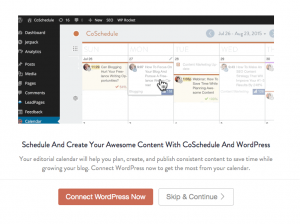I ran across a Tweet the other day that looked like this:

As a data-driven marketer, I was horrified by the Tweet after spending years convincing clients they needed to use social media analytics to drive their marketing efforts and improve market performance.
I immediately jumped to the post and, after a little more digging around, found the report penned by Vision Critical based on analysis of social media data from 3 major brands. I was all set to debunk their findings, until I read the report and it made perfect sense.
Now, don’t get me wrong. I still believe in social media analytics, but I have to agree they have a point and there’s a limit to the usefulness of social media data.
Lies, damn lies, and social media analytics
What Vision Critical did was segment Facebook users into 3 groups (although the segments likely extend to other social networks despite profound differences in the composition and character of the segments):
- Enthusiasts who post very frequently
- Dabblers who post occasionally
- Lurkers who post rarely
Findings from Vision Critical show profound differences in attitudes, behaviors, demographics, and lifestyles between these 3 groups (especially between Enthusiasts and the other 2 groups). Critically important, these differences point to different marketing strategies appropriate for the groups.
However, and this is the major take-away from their study, social media analytics are skewed in favor of enthusiasts because their voices drown out the voices of other social media users because they’re so vocal. That means the insights you glean from social media analytics almost exclusively represent enthusiasts (which make up about 29% of social media users). Thus,:
the people who participate and post on social media are not representative of your customers
Using social profiles along with analytics provided by Vision Critical’s Customer Intelligence Platform, top brands found:
almost 85% of what you hear on social comes from slightly less than 30% of the social media audience—a slice that has distinctly different shopping, media and social media habits. That means that social media analytics can’t tell you what you need to know about your customers.
Dabblers, Lurkers, and Enthusiasts
You’re mainly learning the opinions of enthusiasts who make up about 30% of consumers but, 85% of what you hear comes from these folks — which skews findings so you think you’ve captured true sentiments when all you’ve got are beliefs about Enthusiasts. To make matters worse, your target market might not be enthusiasts, at all, but more on this later.
The attitudes, beliefs, and behaviors of these 3 market segments are vastly different. For instance:
- 26% of enthusiasts shop for appeal at “big box” stores, compared with only about half that number (14%) among lurkers
- 42% of enthusiasts look to Facebook for recommendations while less than half (19%) of lurkers do.
- Social media enthusiasts are more influenced by social media than lurkers or dabblers, with only about 20% considering social media when they make a purchase, compared with 34% of enthusiasts.
Basing your key marketing decisions on what you discover through social media analytics may be leading you astray — and costing you money. Companies trusting social media for all their customer insights are missing the voices of billions of folks who never use Facebook, Twitter, or other social networks.
Listening to enthusiasts gives you a unrepresentative picture of your customers as a whole for three reasons: analytics tools don’t reflect what happens in social media, social media users don’t reflect your customers and enthusiasts don’t reflect your entire social media audience.
Demographically, social media data over-represents women with lower incomes (below $ 50,000) because that’s who makes up the enthusiast segment, while only lurkers represent more affluent consumers with incomes over $ 100,000 in the same proportion as the general population.
 Courtesy of Vision Critical
Courtesy of Vision Critical
Notice this comparison of the 3 social media segments as compared to the overall population on just the income demographic variable.
Reaching consumers offline is also different, with lurkers watching more documentaries and cooking shows, while other types of shows are watched about equally by all 3 segments.
Forcing social media analytics to tell the truth
Vision Critical’s solution for the dilemma of social media analytics inaccuracies is to add their product to your toolbox. Vision Critical offers solutions aimed at different verticals combining more traditional online research with social media insights to provide a clearer picture of your consumers.
Obviously, that’s one solution and it’s a good one if you can afford the time and money necessary for data collection or want to buy data not specific to your brand.
But, what are the options for companies that don’t want to go that route?
Accept the limitations of social media analytics
While it may not provide a representative view of your target personas, social media analytics offers great insights and many companies use these analytics to greatly improve their market performance.
Here are the types of insights available with social media analytics:
- Visits and conversion rates across different social platforms.
- How the customer journey progresses and where social networks impact that journey.
- Which posts get the most engagement across various platforms?
- Which platform generates the highest AOV (average order value) and highest CLV (customer lifetime value).
Notice in every case, the lack of statistical representation doesn’t matter one bit. Sure, we may be getting more visits from 1 social media user segment than others, but we’re looking for the ability of a platform to contribute to our goals, not understanding customer thoughts, feelings, and behaviors.
New tools for accessing customer thoughts, feeling , and behaviors
Another option is to find tools capable of generating customer insights — ones where the data is more representative than it is in social networks. Preferably ones addressing your target audience.
 Age by Gender
Age by Gender
Google offers a partial solution with its new demographic and interest insights based on actual visitors to your website. See this pie chart that represents age by gender for my website. It provides a good tool for understanding who’s actually visiting my site.
I can get similar insights based on the interests of my website visitors.
Another tool offering great promise of insights comes from one of my clients — Groupsurfing. Their new product, hexsee, which launches in just a few weeks creates private layers over the internet allowing users to invite friends on adventures. Friends leave comments right over live content — and each comment is visible only to the group.
Friends browse independently, while visual positional awareness let’s everyone know where everyone else is and, when they find something worth commenting on, the comment pops up momentarily. Clicking on the token takes a user to the content where the comment is embedded. A timeline means users don’t have to collaborate in real-time and can catch up on the conversation whenever they want.
We think users will enjoy hexsee adventures when they want feedback on purchases — ie. expert opinions or just whether a particular product looks good to others. Planning is also easy with hexsee and eliminates the frequent practice of copying and pasting URLs into messaging every time you want someone’s opinion of a website.
We think the data generated by these adventures (anonymous, of course) will provide valuable insights about what’s going on inside the decision-making process. It remains to be seen how representative the data will be along different demographic and psychographic variables.
(234)
Report Post








